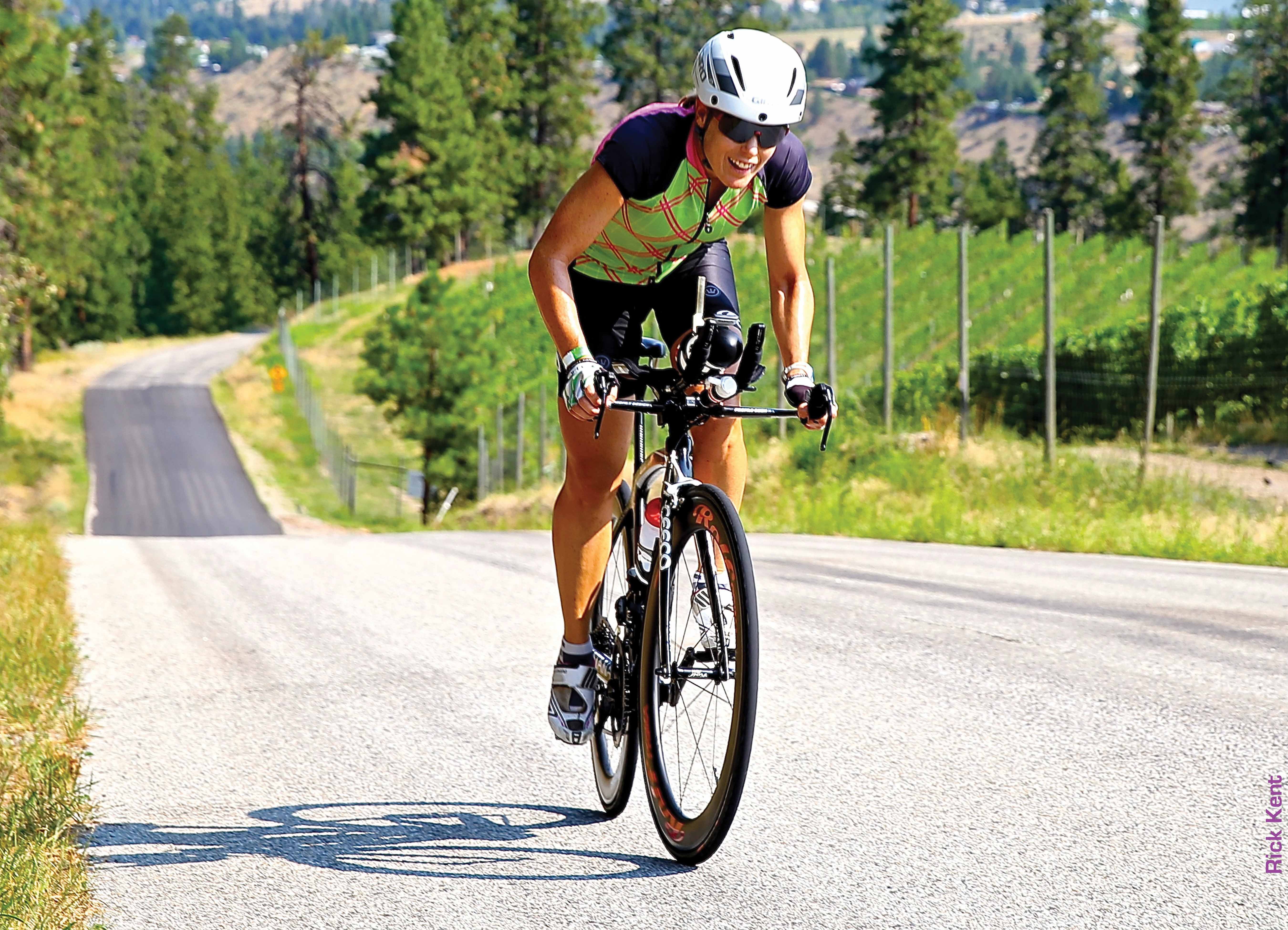PROfile: Kate Bevilaqua

Photo: Rick Kent
A three-time Ironman champion from Australia, Kate Bevilaqua was the first woman to win an Ultraman event overall when she took the title in August in Penticton, Canada. We caught up with her after the three-day, 250-kilometer race to hear her take on tackling the crazy distance.
Her motivation
“Doing Ultraman has been in my mind for five years—my friends have always known that it’s something I wanted to do. It never fit into the schedule with trying to get to Kona and such, so it’s always been pushed off. This year when I decided I wasn’t chasing [Ironman] points because I was a little bit behind, I thought, ‘Now’s the time.’ The challenge of the event has always been something that I was thinking, ‘I wonder if I can do that.’ Having done a few Ironman races [editor’s note: close to 30], I knew I had the ability to go longer and slower.”
Training approach
“I did Ironman Lanzarote in May, had a week off, then went home to Perth, Australia, and came back to the U.S., so I basically had two months. I sat down with my coach and came up with a plan of attack. It was really about that one long ride becoming a lot longer. I was doing four-hour runs, but I never ran over 50K. I deliberately planned big days back to back. Initially I was concerned that I didn’t have enough time with two months to go, but I also found that the volume of training [30–35 hours per week] would be hard to maintain for a long time.”
The race
“The run made me the most nervous, but in the end, it was Day 2 where I cracked. There was one patch where we were slogging into headwinds after 130 miles. My crew pulled me off and got some Red Bull in, got some food in, and I had my physio with me to give me a quick stretch and get me going again. I really struggled to finish that night, and was emotional, hungry and really questioning my decision to do it. My crew was awesome and kept feeding me and woke me up at two in the morning to eat pizza.”
“I didn’t go in thinking I could win, and I had ideas of the women’s records, but I had no idea of overall pacing. There were guys there with similar [personal best] Ironman times.”
“I didn’t expect it to be as awesome as it was—the camaraderie. Everyone is there for their own personal reasons, and when you see each other, you realize you’ve had the same ups and downs as everyone else.”
The mental challenge
“Having to do it three days in a row was the toughest part. For Ironman, you just have to prepare for that one day. I think my crew was as mentally drained as I was. I’m hoping it makes me mentally stronger now.”
What’s next
“For now, it’s about recovering and getting back into half-iron and Ironman distance. I would like to race Kona again next year.”
RELATED: The Story Of The Ultraman World Championship
What is Ultraman?
Three days of racing
Day 1 6.2-mile swim, 90-mile bike
Day 2 171.4-mile bike
Day 3 52.4-mile run
35 total number of athletes allowed to compete
14:30 Qualifying time an entrant must meet in an iron-distance race within 18 months prior to applying to do the Ultra520K
$1,000 entrance fee
2 number of people in your mandatory support crew
24:16:27 Winner Kate Bevilaqua’s finishing time for the three days (the next competitor went 24:42)